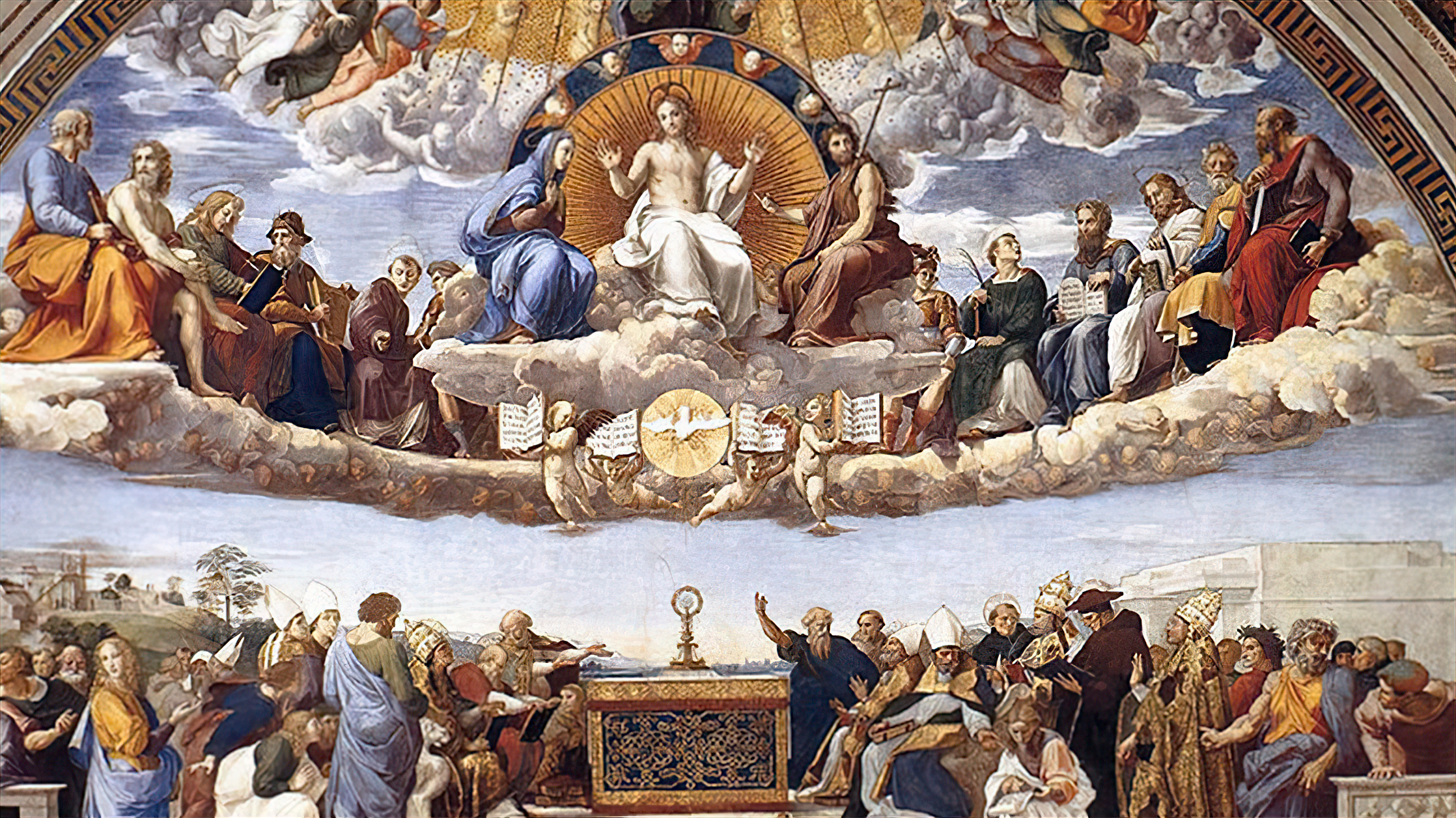
The Eucharist:
The Source and Summit of Christian Life
“Well, if [the Eucharist] is a symbol, to hell with it.”
— Flannery O’Connor (1925-1964)
By Chris and the Editorial Staff
Eucharist, Transubstantiation, and Real Presence
Jesus lived and died. Yet his body has never been found.
Catholic Christians maintain that Jesus’ body remains with us, in a different form. The anointed one—Christ—offered His divine flesh for humanity during the Last Supper. According to Catholics, this flesh remains present on Earth under the appearance of bread and wine. When the priest blesses the bread and wine, they transform into the body and blood of Jesus through a process called transubstantiation. When Jesus’ body and blood, soul and divinity, are presented under the guise of bread and wine this constitutes the “Eucharist,” which Catholics receive and consume during Mass.
The doctrine of Transubstantiation attempts to explain how bread and wine become Christ’s body and blood without losing their exterior appearance. The word has Latin roots: “trans” translates to “across” or “over” and “substantia” means “substance.” Quite literally then, “transubstantiation” is a transformation from one substance to another. Regarding the Eucharist, bread and wine cross over into two completely new and disparate substances: the body and blood of Christ. While their physical appearance and chemical composition remain unchanged, their substance has been altered.
Accordingly, Catholics believe that Christ is present in the Eucharist through transubstantiation. This doctrine is called the “Real Presence of Christ in the Eucharist,” or simply “Real Presence.”
Eat, Drink: The Last Supper
To understand the origins and persistence of this belief in the Real Presence, we must revisit the last hours Jesus spent on Earth.
The night before Jesus died, he ate a memorial supper with his closest followers, the apostles (twelve men chosen from his disciples). The night was a special celebration of the Passover. During this holiday, Jews celebrate the Israelites’ liberation from slavery in Egypt and commemorate the night when God “passed over” the Israelite houses marked with lamb’s blood. The lamb played a particular role as a sacrificial animal offered in atonement for people’s sins. Indeed, Christ is often referred to as “the Lamb of God.”
Catholics point to the Passover meal Jesus shared with his twelve apostles, known as the Last Supper, as the moment when Jesus instituted the Eucharist.
Jesus elevated the bread and wine, saying, “Take and eat; this is my body. Drink… this is my blood” (Matthew 26:26–28). With these words, Jesus transformed ordinary bread and wine into his revered body and blood. Catholicism is keen to point out Jesus’ word choice: “is.” He didn’t say the bread was like or similar to His body—not a reminder, memento, or symbol—but that it was His body.
The Last Supper thus became the first Mass, and Catholic teachings hold that this transformation recurs during every Mass worldwide nearly every day of the year. It’s considered Christ’s way of remaining with us, not just in spirit, but in body, blood, soul, and divinity “to the very end of the age” (Matthew 28:20).
A Giant Leap of Faith?
Let’s take a step back. So we’re saying that in the Catholic Mass, the priest magically turns a piece of bread into the body and blood of Christ, but it still looks, feels, and tastes like bread. And we’re supposed to take the Church’s word for it.
In all seriousness, I often struggled to believe in the Real Presence, especially in the early days of my Catholic faith. Sure, a God who managed to create an immensely complex and elegant universe such as ours can hypothetically do anything, but my senses told me that a piece of bread stays a piece of bread. Doesn’t believing in the Real Presence require a giant leap of faith? Or if a loving God exists and He wants us to believe in the Real Presence, then wouldn’t He give us some signs?
Then I discovered that occasionally the Eucharist behaves in strange and mysterious ways.


